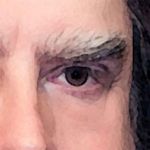Copy link to clipboard
Copied
Let's assume that you have an Indesign document with grayscale images (Dot Gain %, sGray, Gray Gamma or Blank Ink, it doesn't matter) and you plan to print that in one (black) color only.
You export it to PDF without color conversion and without ICC profiles.
You view it in Acrobat's Output Preview, while switching between different CMYK profiles. Then you notice that the appearance of the images changes to what I would describe as "warmer" gray (a bit brownish) or "colder" gray (a bit bluish). Note however that C=0, M=0, Y=0. For example, PSO Uncoated looks a bit "warm", while Euroscale Uncoated - a bit "colder".
I assume that this due to the characteristics of the different CMYK profiles and does not constitute an error. Am I correct?
I don't know if this is a psychological thing, but now I'm comparing some b/w prints (on paper) and some of them look "warmer" or "colder" to me, although I'm sure that they were printed in 1 color (due to the costs).
Thanks.
 2 Correct answers
2 Correct answers
If the document — if the printer, be it a digital box or a guy manning a press — uses only black, K, then grays will be nominally neutral no matter what profile or export process is used. Black is black, shades of black are gray; the only thing that would vary would be things like density, dot gain, etc.
But if the "printer" is full CMYK and the profile or process allows any component of rich black, the grays may be anything from 100% K (that is, black ink or toner only) or any mix intended to
...Hi @sd5e8a , When you place a grayscale image in InDesign its embedded Gray profile is ignored and, with Overprint Preview On, it is previewed via the InDesign document’s CMYK profile showing how it will print on the CMYK Black plate. Same happens in Acrobat on a PDF/X Export to Document CMYK.
A defect of Gray ICC profiles is, the Black ink color is assumed to be absolute black with no color cast, while CMYK ICC profiles capture the black ink’s density and color characteristics. You can see th
...Copy link to clipboard
Copied
If the document — if the printer, be it a digital box or a guy manning a press — uses only black, K, then grays will be nominally neutral no matter what profile or export process is used. Black is black, shades of black are gray; the only thing that would vary would be things like density, dot gain, etc.
But if the "printer" is full CMYK and the profile or process allows any component of rich black, the grays may be anything from 100% K (that is, black ink or toner only) or any mix intended to produce a rich(er) black, and that can definitely shade warmer/redder or cooler/bluer.
If your job was printed, offset, using black ink, it would be entirely up to the press guy to use either a pure black or a rich/blended one.
If they were printed digitally, many factors from the exact export profile to choices made by the printer firmware to the press guy's setup choices could use a rich black with shading towards warmer or cooler.
If what you want is pure-black, no rich tinting, you can control it with the PDF export, but you may also want to make sure your printer knows you don't want any "help" with the actual print characteristics unless it's discussed and agreed on. Otherwise, you will see slight variations such as you're describing. (Pro tip, though: a good press guy's experience and input is not to be dismissed lightly.)
—
┋┊ InDesign to Kindle (& EPUB): A Professional Guide, v3.1 ┊ (Amazon) ┊┋
Copy link to clipboard
Copied
Hi @sd5e8a , When you place a grayscale image in InDesign its embedded Gray profile is ignored and, with Overprint Preview On, it is previewed via the InDesign document’s CMYK profile showing how it will print on the CMYK Black plate. Same happens in Acrobat on a PDF/X Export to Document CMYK.
A defect of Gray ICC profiles is, the Black ink color is assumed to be absolute black with no color cast, while CMYK ICC profiles capture the black ink’s density and color characteristics. You can see that if you turn on Overprint Preview and compare the difference between a newsprint profile and a coated profile—100% black would be far from absolute on newsprint.
These pages have identical outptut values, but different CMYK profile assignments. Default US Web Coated SWOP on the right, and US Newsprint on the left:
You can see the affect of the Newsprint profile on 0|0|0|100–it converts back to RGB as 44|21|0— not 0|0|0



